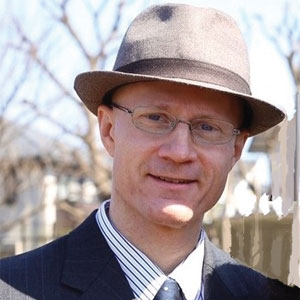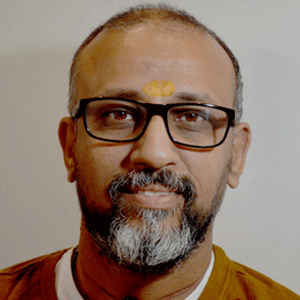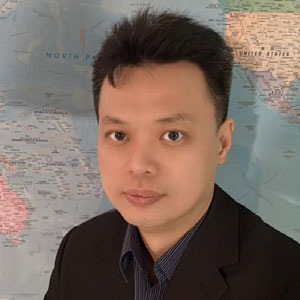Read Also
Incorporating the power of recognition into our vendors' sustainability journey
Cynthia Khoo, Head, Central Procurement Office, OCBC Bank (Malaysia) Berhad
Elevating Guest Experience with Data
Clive Edwards, Senior Vice President, Operations, Capella Hotel Group
Empowering Educators with Faith, Excellence and Purpose
Amelia Febriani, Head of Training and Development, Mawar Sharon Christian School Official
Leading with AI: From Ethics to Enterprise Impact
Adrienne Heinrich, AI COE Head, Senior Vice President, Union Bank of the Philippines
Done Today Beats Perfect Tomorrow: The New IT Advantage
Samuel Budianto, Head of Information Technology,Time International
The Shift from Cybersecurity to Product Security: A Business Imperative
Peter Wong, Head of Information Security and Compliance, Apac, Edenred
Advancing Retail through E-Commerce, Cloud and Cybersecurity
John Gaspar Antonio, CIO/Vice President for Information Technology & E-Commerce / Data Protection Officer, Metro Retail Stores Group
Transforming Risk Management into Strategic Business Advantage
Jeremy Leong, Chief Risk Officer and Head of Risk and Compliance, Taishin International Bank – Brisbane Branch













 Figure 3: Project dynamics in appraise-appraiser situations
Project execution is highly dynamic in nature, and changes are the only constants that one needs to manage. Similar projects assigned to the same team at different time periods have shown such as higher productivity or lower cost expectations. Understanding the dynamics of a project is one of the key elements for success. Project dynamics include combination of scope, environment, technology, stakeholders, constraints, deliverables, and business expectations. Processes, tools, and measurements have become an integral part of projects as they control the dynamics in a structured manner, and they should be adjusted, calibrated and made suitable, based on the complexity of projects.
Some of the myths on project management and about project managers are:
▪ There is only one possible way to manage a specific type of project
▪ A specific way of management will work in most of the situations, environment and people
▪ A project manager who has successfully delivered one project (or few projects) can repeat the same success (or levels of successful measures) across every other type of projects
Figure 3: Project dynamics in appraise-appraiser situations
Project execution is highly dynamic in nature, and changes are the only constants that one needs to manage. Similar projects assigned to the same team at different time periods have shown such as higher productivity or lower cost expectations. Understanding the dynamics of a project is one of the key elements for success. Project dynamics include combination of scope, environment, technology, stakeholders, constraints, deliverables, and business expectations. Processes, tools, and measurements have become an integral part of projects as they control the dynamics in a structured manner, and they should be adjusted, calibrated and made suitable, based on the complexity of projects.
Some of the myths on project management and about project managers are:
▪ There is only one possible way to manage a specific type of project
▪ A specific way of management will work in most of the situations, environment and people
▪ A project manager who has successfully delivered one project (or few projects) can repeat the same success (or levels of successful measures) across every other type of projects
 Figure 1: Representative Hierarchy Structure with “nature” of the managers
A survey was conducted across different individuals from 14 organizations (IT companies, Government organization, Research Institutes) covering people who have over 450 years of experience to understand the characteristics of good-great manager and qualities that distinguishes them. The group of respondents were categorized into nature of work (IT Projects and Research-Consulting Projects) and based on their experience (over 20 years, between 10-20 years, under 10 years). It is observed that integrity, collaboration, and problem solving skills are very important and are of top quality among IT projects and research-consulting streams. However, it is also observed that unlearning-learning, integrity and empathy are the rarest attributes found among managers. Similarly, across the age groups, three qualities that was selected among 20 attributes were integrity, problem solving and empathy.
Figure 1: Representative Hierarchy Structure with “nature” of the managers
A survey was conducted across different individuals from 14 organizations (IT companies, Government organization, Research Institutes) covering people who have over 450 years of experience to understand the characteristics of good-great manager and qualities that distinguishes them. The group of respondents were categorized into nature of work (IT Projects and Research-Consulting Projects) and based on their experience (over 20 years, between 10-20 years, under 10 years). It is observed that integrity, collaboration, and problem solving skills are very important and are of top quality among IT projects and research-consulting streams. However, it is also observed that unlearning-learning, integrity and empathy are the rarest attributes found among managers. Similarly, across the age groups, three qualities that was selected among 20 attributes were integrity, problem solving and empathy.
 Figure 2: Doer-Leader Matrix
It can be concluded that project dynamics are highly complex and contextual. While it is a challenge to get project managers with 15 different best skills quoted above, but maybe it is better to have a manager who can see the big picture, get deep into details, connect with people to get the best from each individual, and willingness to learn, and owns the project. A successful project manager is one who has eye for detail as a detective, analyzes data points as a statistician, gets the best from the team members as a coach, learns as a student and asks the right questions as a child.
Figure 2: Doer-Leader Matrix
It can be concluded that project dynamics are highly complex and contextual. While it is a challenge to get project managers with 15 different best skills quoted above, but maybe it is better to have a manager who can see the big picture, get deep into details, connect with people to get the best from each individual, and willingness to learn, and owns the project. A successful project manager is one who has eye for detail as a detective, analyzes data points as a statistician, gets the best from the team members as a coach, learns as a student and asks the right questions as a child. 








